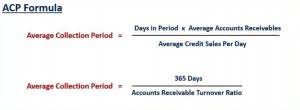
Also, if the rates determined are nowhere close to being accurate, the decisions based on those rates will be inaccurate, too. Conversely, cobalt may be an indirect cost to a hotel company, as cobalt is used in portable lamps and batteries to produce light for guests in outdoor areas. Overhead costs, usually downplayed in business expense accounting, could be crucial for business survival. (b) Alternatively, we use machine hour rate if in the factory or department of the production is mainly controlled or dictated by machines. After reviewing the product cost and consulting with the marketing department, the sales prices were set.
Should you have predetermined overhead rates for each department of your business?
- The allocation base (also known as the activity base or activity driver) can differ depending on the nature of the costs involved.
- For this, you can take the average manufacturing overhead cost for the previous three months, and divide this by the machine hours in the current month.
- Often, the actual overhead costs experienced in the coming period are higher or lower than those budgeted when the estimated overhead rate or rates were determined.
- If you’d like to learn more about calculating rates, check out our in-depth interview with Madison Boehm.
- 11 Financial may only transact business in those states in which it is registered, or qualifies for an exemption or exclusion from registration requirements.
- As previously mentioned, the predetermined overhead rate is a way of estimating the costs that will be incurred throughout the manufacturing process.
However, the problem with absorption/traditional costing is that we have to ignore individual absorption bases and absorb all overheads using a single level of activity. Hence, this is a compromise on the accuracy of the overall allocation process. On the other hand, the ABC system is more complex and requires extensive administrative work. Additionally, you should recalculate your predetermined overhead rate any time there is a significant change in your business, such as the addition of new equipment or a change in your product line. Again, this predetermined overhead rate can also be used to help the business owner estimate their margin on a product. Once you have a handle on your estimated overhead predetermined overhead rate formula costs, you can plug these numbers into the formula.
Ethical Cost Modeling
- For instance, if the activity base is machine hours, you calculate predetermined overhead rate by dividing the overhead costs by the estimated number of machine hours.
- The concept is much easier to understand with an example of predetermined overhead rate.
- At the end of the accounting period, the total overheads absorbed based on the predetermined overhead rate are compared to the actual overheads incurred by the business.
- Fixed costs would include building or office space rent, utilities, insurance, supplies, and maintenance and repair.
- (b) Alternatively, we use machine hour rate if in the factory or department of the production is mainly controlled or dictated by machines.
Unexpected expenses can be a https://www.facebook.com/BooksTimeInc/ result of a big difference between actual and estimated overheads. If you do not manage your overhead costs properly during your growth journey, you may encounter cost hiccups, unpleasant regulatory surprises, and business disruptions. This complexity is driven by different factors, including but not limited to common activity for multi-products and a greater number of supportive activities for the production. The movie industry uses job order costing, and studios need to allocate overhead to each movie. Their amount of allocated overhead is not publicly known because while publications share how much money a movie has produced in ticket sales, it is rare that the actual expenses are released to the public. Two companies, ABC company, and XYZ company are competing to get a massive order that will make them much recognized in the market.
Predetermined Overhead Rate (POHR): Formula and Calculation
Unless a cost can be directly attributable to a specific revenue-generating product or service, it will be classified as overhead, or as an indirect expense. Hence, the fish-selling businesses need to monitor the seasonal variations and adjust the cost pattern of the products. The use of predetermined overheads effectively incorporates the cost effects of seasonal variations in the product cost and price.
The overhead rate is a cost allocated to the production of a product or service. Overhead costs are expenses that are not directly tied to production such as the cost of the corporate office. To allocate overhead costs, an overhead rate is applied to the direct costs tied to production by spreading or allocating the overhead costs based on specific measures. The period selected tends to be one year, and you can use direct labor costs, hours, machine hours or prime cost as the allocation base.


The overhead cost per unit from Figure 6.4 is combined with the direct material and direct labor costs as shown in Figure 6.3 to compute the total cost per unit as shown in Figure 6.5. The formula for the predetermined overhead rate is purely based on estimates. Hence, the overhead incurred in the actual production process will differ from this https://www.bookstime.com/articles/what-is-order-of-liquidity estimate. A predetermined overhead rate is an allocation rate given for indirect manufacturing costs that are involved in the production of a product (or several products). Of course, management also has to price the product to cover the direct costs involved in the production, including direct labor, electricity, and raw materials. A company that excels at monitoring and improving its overhead rate can improve its bottom line or profitability.

There are several reasons why businesses need to calculate a predetermined overhead rate. The production hasn’t taken place and is completely based on forecasts or previous accounting records, and the actual overheads incurred could turn out to be way different than the estimate. The predetermined overhead rate calculation shown in the example above is known as the single predetermined overhead rate or plant-wide overhead rate.

To Estimate the Total Manufacturing Costs
- When making pricing decisions about a product, the management of a business must first understand what the costs of the product are.
- Once an overhead rate is calculated using the given formula, it’s absorbed in the cost card of the business using the actual level of the activity.
- So, if you were to measure the total direct labor cost for the week, the denominator would be the total weekly cost of direct labor for production that week.
- Also, if the rates determined are nowhere close to being accurate, the decisions based on those rates will be inaccurate, too.
- The company has direct labor expenses totaling $5 million for the same period.
Businesses monitor relative expenses by having an idea of the amount of base and expense that is being proportionate to each other. This can help to keep costs in check and to know when to cut back on spending in order to stay on budget. Take, for instance, a manufacturing company that produces gadgets; the production process of the gadgets would require raw material inputs and direct labor. These two factors would definitely make up part of the cost of producing each gadget.
This chapter will explain the transition to ABC and provide a foundation in its mechanics. Granted, overhead costs are defined as indirect expenses to a company, but determining an “indirect” or “direct” cost may vary widely across businesses, activities, and markets. Overhead expenses are generally fixed costs, meaning they’re incurred whether or not a factory produces a single item or a retail store sells a single product. Fixed costs would include building or office space rent, utilities, insurance, supplies, and maintenance and repair.

